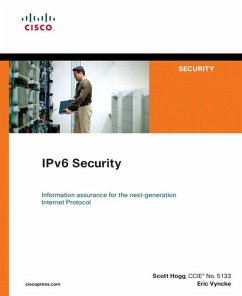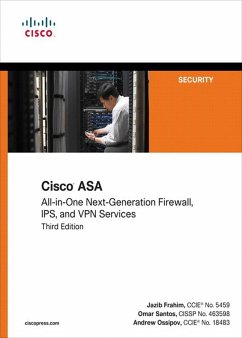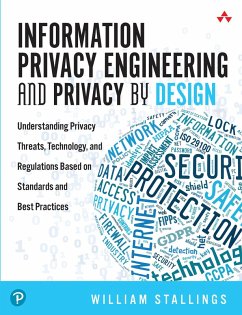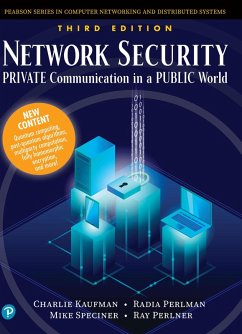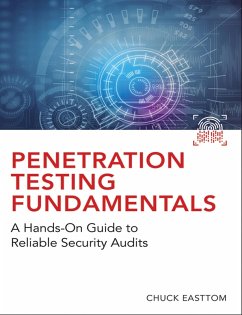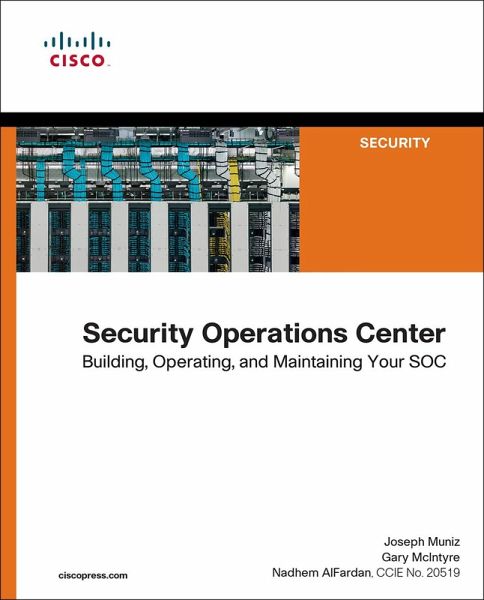
Security Operations Center (eBook, PDF)
Building, Operating, and Maintaining your SOC
Versandkostenfrei!
Sofort per Download lieferbar
30,95 €
inkl. MwSt.
Weitere Ausgaben:

PAYBACK Punkte
15 °P sammeln!
Security Operations CenterBuilding, Operating, and Maintaining Your SOCThe complete, practical guide to planning, building, and operating an effective Security Operations Center (SOC)Security Operations Center is the complete guide to building, operating, and managing Security Operations Centers in any environment. Drawing on experience with hundreds of customers ranging from Fortune 500 enterprises to large military organizations, three leading experts thoroughly review each SOC model, including virtual SOCs. You'll learn how to select the right strategic option for your organization, and the...
Security Operations Center
Building, Operating, and Maintaining Your SOC
The complete, practical guide to planning, building, and operating an effective Security Operations Center (SOC)
Security Operations Center is the complete guide to building, operating, and managing Security Operations Centers in any environment. Drawing on experience with hundreds of customers ranging from Fortune 500 enterprises to large military organizations, three leading experts thoroughly review each SOC model, including virtual SOCs. You'll learn how to select the right strategic option for your organization, and then plan and execute the strategy you've chosen.
Security Operations Center walks you through every phase required to establish and run an effective SOC, including all significant people, process, and technology capabilities. The authors assess SOC technologies, strategy, infrastructure, governance, planning, implementation, and more. They take a holistic approach considering various commercial and open-source tools found in modern SOCs.
This best-practice guide is written for anybody interested in learning how to develop, manage, or improve a SOC. A background in network security, management, and operations will be helpful but is not required. It is also an indispensable resource for anyone preparing for the Cisco SCYBER exam.
· Review high-level issues, such as vulnerability and risk management, threat intelligence, digital investigation, and data collection/analysis
· Understand the technical components of a modern SOC
· Assess the current state of your SOC and identify areas of improvement
· Plan SOC strategy, mission, functions, and services
· Design and build out SOC infrastructure, from facilities and networks to systems, storage, and physical security
· Collect and successfully analyze security data
· Establish an effective vulnerability management practice
· Organize incident response teams and measure their performance
· Define an optimal governance and staffing model
· Develop a practical SOC handbook that people can actually use
· Prepare SOC to go live, with comprehensive transition plans
· React quickly and collaboratively to security incidents
· Implement best practice security operations, including continuous enhancement and improvement
Building, Operating, and Maintaining Your SOC
The complete, practical guide to planning, building, and operating an effective Security Operations Center (SOC)
Security Operations Center is the complete guide to building, operating, and managing Security Operations Centers in any environment. Drawing on experience with hundreds of customers ranging from Fortune 500 enterprises to large military organizations, three leading experts thoroughly review each SOC model, including virtual SOCs. You'll learn how to select the right strategic option for your organization, and then plan and execute the strategy you've chosen.
Security Operations Center walks you through every phase required to establish and run an effective SOC, including all significant people, process, and technology capabilities. The authors assess SOC technologies, strategy, infrastructure, governance, planning, implementation, and more. They take a holistic approach considering various commercial and open-source tools found in modern SOCs.
This best-practice guide is written for anybody interested in learning how to develop, manage, or improve a SOC. A background in network security, management, and operations will be helpful but is not required. It is also an indispensable resource for anyone preparing for the Cisco SCYBER exam.
· Review high-level issues, such as vulnerability and risk management, threat intelligence, digital investigation, and data collection/analysis
· Understand the technical components of a modern SOC
· Assess the current state of your SOC and identify areas of improvement
· Plan SOC strategy, mission, functions, and services
· Design and build out SOC infrastructure, from facilities and networks to systems, storage, and physical security
· Collect and successfully analyze security data
· Establish an effective vulnerability management practice
· Organize incident response teams and measure their performance
· Define an optimal governance and staffing model
· Develop a practical SOC handbook that people can actually use
· Prepare SOC to go live, with comprehensive transition plans
· React quickly and collaboratively to security incidents
· Implement best practice security operations, including continuous enhancement and improvement
Dieser Download kann aus rechtlichen Gründen nur mit Rechnungsadresse in A, B, BG, CY, CZ, D, DK, EW, E, FIN, F, GR, HR, H, IRL, I, LT, L, LR, M, NL, PL, P, R, S, SLO, SK ausgeliefert werden.








